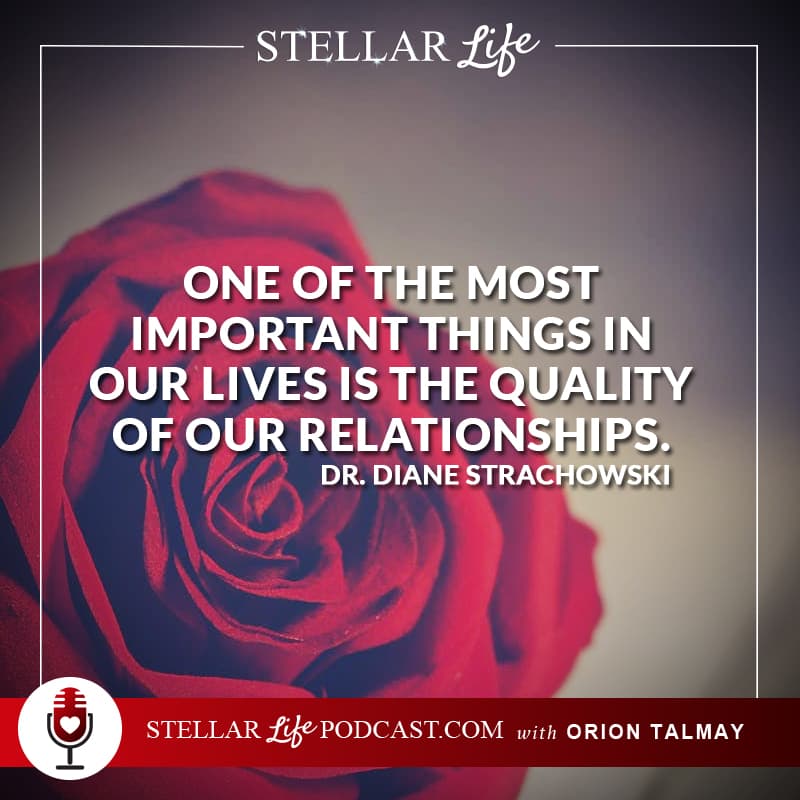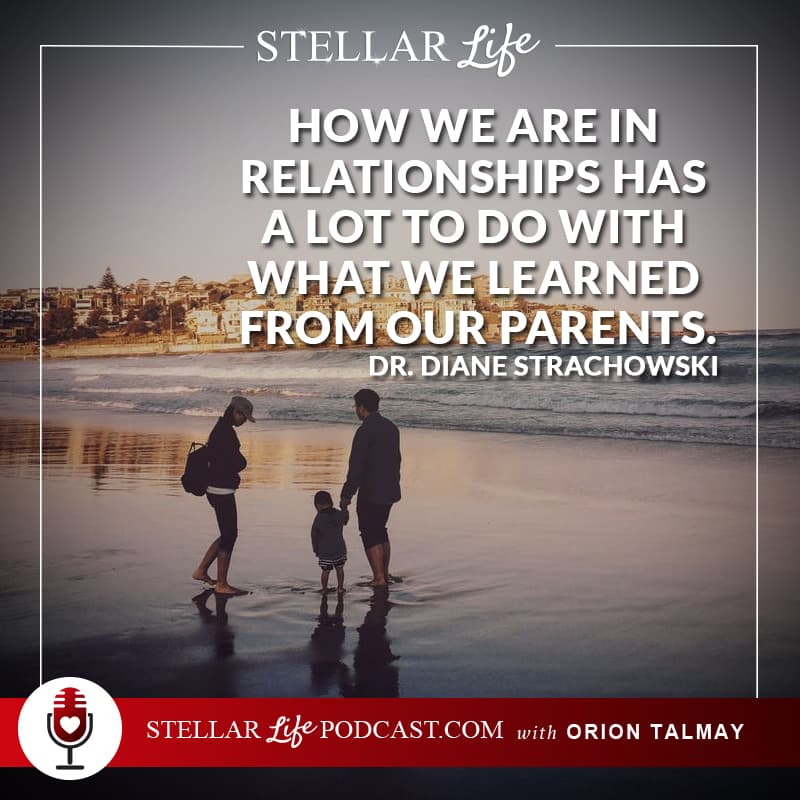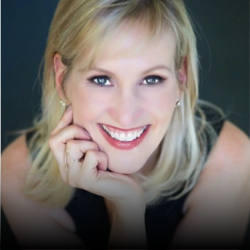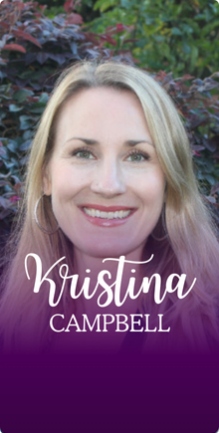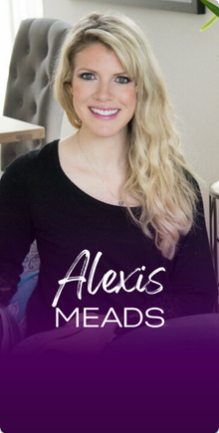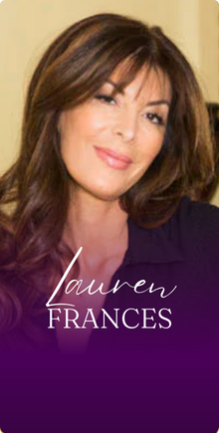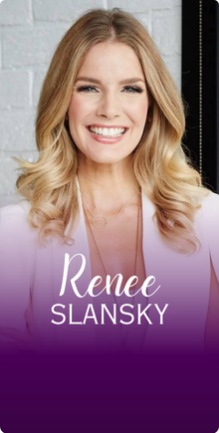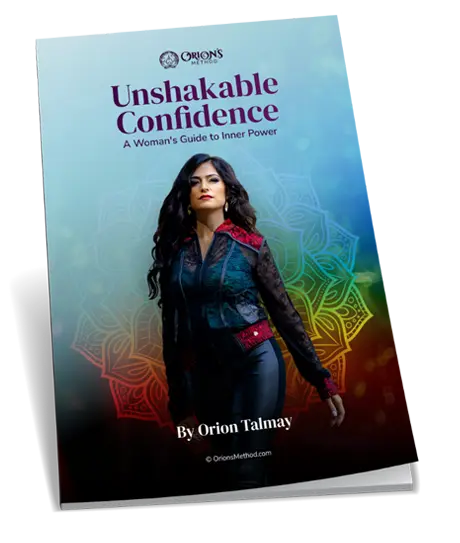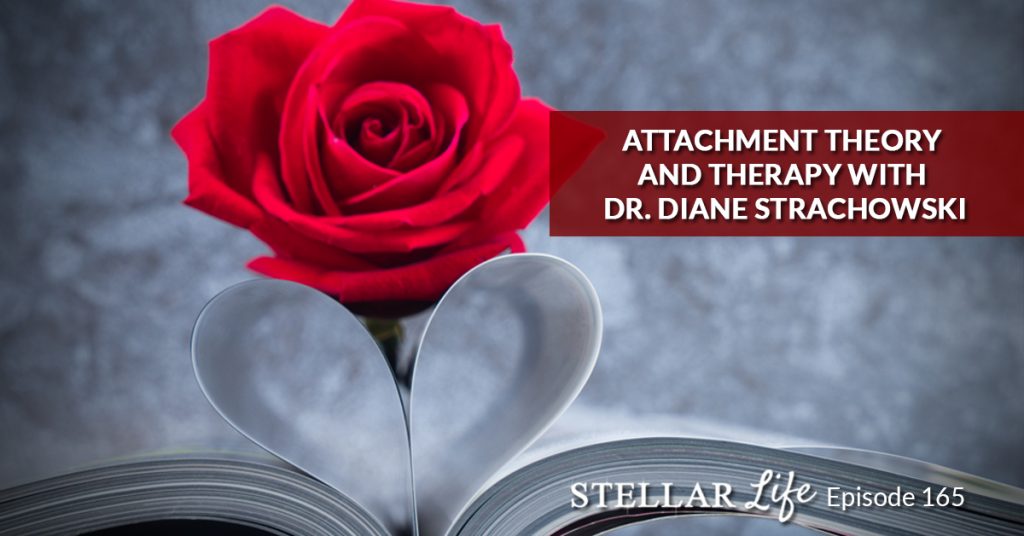
About Today’s Show
Hey, Diane. Welcome to Stellar Life podcast.
Hi, Orion. Thank you for having me.
Thank you for being here. It’s going to be really interesting. Before we start, you offered me a quiz and I’ve learned about myself. I don’t know what I’ve learned yet but we’re going to talk about it. Before we start all that, why don’t you share a little bit about yourself?
Sure, Orion. I am a licensed psychologist. I work in Northern California. I have a doctoral degree. I am a love expert.
How did you become a love expert?
Well, I’ve actually been licensed for 20 years now—hard to believe. I work with single people to help them find love. I also work with couples in doing some deep work by helping them manage affairs and helping them become deeper in their relationships. In the last five years, this has been the real focus of my work. I’m also a trained cognitive behavioral specialist. I was trained at Stanford. This has really been my life mission because the older I get, I realize at the end of the day one of the most important things in our lives is our relationships.
One of the most important things in our lives is our relationships. Share on XFor sure. At the end of the day, at the end of your life, you look back and you’re going to think about, who did I love, who loved me, and those are the things that you would take with you, nothing else. Not the glory, not the fame, not the money.
It’s absolutely right. I’ve heard the quote, “Five words you don’t put on your tombstone: I wish I worked more.” Right? People – they look back on regret with relationships. In many ways, my practice has mimicked what I found most important in my own love relationship too. I do love helping people have more success in those areas. It’s been really a very gratifying process.
Why do you think people struggle with finding love or holding on and building a great relationship?
It’s complex. I think at the end of the day it comes back to our early childhood. So many of our wounds but also our love style in terms of how we are in relationships has a lot to do with what we learned in our earliest relationship with our parents. If we had a loving, unconditional relationship with them, some people find love easier. But if you didn’t and you might be more anxious or more avoidant then you’re going to struggle. These areas are going to show up in your adult romantic relationships based upon the patterns that were established early on in your life.
What are some examples of how our history affects our love life or finding a partner?
That’s a great question. On my Love Style Quiz, I have been collecting data for a while now. I’m actually close to about 20,000 people who have taken my Love Style Quiz. I’m really fascinated because I also want to put some research into this theory, the old theory of attachment. Looking at young children, it was said that 50% of the population is secure. But I don’t know about, I thought, “Well, is it just in my practice? I see a lot of people who are insecure.” I wanted some relevant data to confirm or disconfirm this. But the majority of people especially women, which is probably the largest group of people that I help, 45% of them have an anxious attachment style. Again, it used to be 50% were secure but my data is saying that now only 25% of people are secure and that the majority of women, in particular, have an anxious attachment style.

Wow. Let’s dive into the attachment styles because I’m very curious to know what they are and how can they affect the relationship.
Sure. Have you heard of John Bowlby?
No.
Okay. I’ll just briefly describe the theory. Dr. Bowlby, back in the 1950s, was interested in studying children and how their attachment style affected them later in their adult relationships. Primarily, he was looking at a group of children that were orphaned at the end of World War II to see how not having a parent affected them romantically later. What Dr. Bowlby found was that it profoundly affected people in terms of their adult relationships. Then, a colleague of his, Mary Ainsworth, years later created a task which she called the Strange Situation, which is actually fascinating. She put children in a lab environment with their parent – children that were 18-24 months old. We measure someone’s attachment style by observing how they handle threat or stress. The concept or the theory is that we’re not always demonstrating your attachment style but you’re going to see your more primitive attachment style during situations for which you feel threatened. In the Strange Situation, what she did is she brought a stranger into the room to see how the child responded with their parent to demonstrate their attachment style. Does that make sense?
What came out of that work — and it’s been replicated in hundreds and thousands of clinical trials — is that she came up with four primary attachment styles. Number one is secure which is what you want to be. Here in the Strange Situation, you see the parent and the child being highly attuned and responsive. The child goes to the parent for comfort and support and then feels calmed by the parent. Having a secure base allows the child to auto-regulate their nervous system. Not only was Dr. Ainsworth studying behavioral cues, but she also had the children hooked up to a heart rate monitor and she was measuring cortisol levels. She wanted to understand these various measures how stressed the child was. With a secure base, you’re going to be better able to manage stress by seeking comfort through the parent. That’s the first attachment style.
The second one which I’m referring to as anxious which is the most popular for women. That child in the Strange Situation, when the stranger is in the room, they feel really aroused in a negative way. Their cortisol levels, which is their stress hormones, are high or spiking and their heart rate is high to indicate that they’re feeling stressed, but they don’t actually calm down as much with the parents. Orion, what’s fascinating is this is pre-aged two. By the time this child is two years old, they’re not experiencing trust with their parent. They’re not getting the benefits from the relationship which is to then be able to calm down. That’s the anxious child and we call them also anxious-angry.
Another measure in attachment style is not only how your partner calms you down or doesn’t, but how you handle a reunion. Another threat in relationships is separations. Another part of this Strange Situation is actually the parent leaves the room, leaves the child alone with the stranger, and then we see how well-attached the child is with the parent when the parent comes back into the room, and this child—because they already feel like you’re there for me, sometimes not always—they can have a little negative reaction towards their parent. The parent comes back into the room and instead of falling into the parent as if you were secure, they might be upset and push their parent or throw a toy.
It doesn’t matter where we start, it only matters where we end. Share on XThat’s the anxious-angry. Then, there’s the third most popular type which is called avoidance. The avoidant child has already learned, again by the time they’re two, that you’re not really there for me. They have a parent who perhaps is preoccupied themselves or unavailable or maybe even in a positive way or they perceive this as positive that, “I want to raise my child to be independent.” This parent gives their child very little attunement and attention so when the stranger comes into the room, the child feels incredibly stressed. We know this from the heart rate and the cortisol levels, but they don’t have the parent there as an anchor or as a support. There’s no comfort. They learn how to auto-regulate. And then as an adult, this is a person who in a relationship can feel smothered. It can feel too close. We see this person if they don’t have good communication skills, kind of backing off in relationships because they fear losing their independence. We see them as being more avoidant.
Then, the fourth type which is quite unfortunate is the child who has experienced some abuse in their relationship with their parent. We call this child disorganized. I like to call it confused because you have a parent who is supposed to be your anchor and your comfort, who is also abusing you. The child in this Strange Situation where the threat is, they’re not sure what to do and they might throw themselves on the ground or have highly disorganized behavior. That’s what Dr. Ainsworth found is the four primary attachments styles, the first three being the most common.
This is very cool. I can see myself in all four and I can see other people in all four, but I really like the distinctions. We did my quiz and I got something good.
You did. You are the confident here, Orion.
When I look at my childhood, I should be the other three. I should not be a confident hero. I guess there are ways to improve on that. For me, for example, I did tons of self-work and self-development. I’ve been studying with a lot of people and did a lot of work, a lot of meditation, did some biohacking and neurofeedback and so many things to feel better. I’m still working on myself. I’m still working on my relationship. I still sometimes have challenges in my relationship even though I am married to the most adorable man on planet earth. Is there a way to improve those?
Absolutely. Let me ask you if you don’t mind sharing, what do you think your type was before all this work? Do you think you were more anxious? More avoidant?

I think I was more anxious or disorganized.
Okay. It sounds that there was a wound there or some inconsistency.
There were tons of wounds. That’s why I’m a coach. That’s why I coach women on how to improve their self-love and self-image and find confidence and all the good stuff which leads to a good relationship and attracting love because I was built on my wounds -I see them as my gifts now. They became gifts when I was able to heal my wounds and I was able to bring this healing to other people.
Absolutely. Orion, I love your story because it is a success story. It doesn’t matter where we start, it only matters where we end. The beauty of that is that we may not have gotten our needs met but if we learn ourselves and learn self-love, and learn to heal, and to quiet ourselves, and to cope with negative feelings and then create a great relationship, even Dr. Bowlby called it earning attachment, and I love that. To me, this is the most positive key point about that if you’re not fortunate enough to have these consistent, wonderful, loving parents, it’s not all lost. Now, we need to figure out to meet our own needs and to soothe ourselves and calm our nervous system. We can do that and also find a way to talk to our partner, in a good relationship—and that other person doesn’t have to be secure either. Even two insecure people can create a secure relationship. It usually takes time to do that. That’s the whole point. I tell people who believe in dating, “Sure. You want to go find what I call a Secure Steve. Wouldn’t that be nice?” But there’s no category online. You go online, everybody would like to check that box, but you can find someone and together you can create security.
Is that true that when you find your soulmate you actually heal each other’s wounded inner child?
Absolutely. I don’t know about the word soulmate.
I love this word. Your partner, your ideal partner.
Your person. But absolutely. It takes a level of maturity and a level of understanding. The other quote that I love, Orion, is that “We’re all like tea bags. You don’t know who you have until you put them in hot water.”
That’s really good.
It’s a great concept because we’re back to attachment where you’re going to find who this person is when they’re under stress. The healing happens when you both can meet each other’s needs during these periods of stress and find that your partner is your anchor. I worry about this idea of a soulmate or twin flames because it sounds a little bit romanticized. I love the positive nature of that but what is it that secure functioning couples do that is different than insecure couples? We take attachment theory to say in a secure functioning relationship with parent-child, both people can calm each other down, they have a positive influence on each other, and that is the healing.
How we are in relationships has a lot to do with what we learned from our parents. Share on XBut the problem is when you have a couple where, for instance, one person is avoidant—classically the man, and the woman is anxious or nervous, we see this inner play. She needs to be validated and she’s seeking acceptance from him, but he feels flooded. She comes forward looking for this attachment in him but not quite getting it so she feels maybe even a little bit controlling because she wants to hear it a certain way, she wants these certain soothing words that will comfort her. But he’s just trying to do what he’s always done which is to remain independent, so she feels like he’s kind of a jerk. “He’s just not giving me what I need. If only he could just tell me the words I need,” and he doesn’t because he’s just trying to breathe. He’s doing him, she’s doing her, and this is the conflict. What I help couples with is to understand that it’s neither good nor bad, it’s just different.
If you are partnered with somebody who has a different love style, how do you handle it? What are some examples?
First, a lot of it is this education piece. What’s really difficult is even in coming up with a quiz, I had a lot of work in the backend of that too, take hundreds of questions and parse them down into something that’s manageable, but we see ourselves as being many different people. I say that actually doesn’t really help; it helps to see yourself as one primary style either avoidant or anxious.
I’ll take the secure hero.
Yes, the confident. Sure. But where we have to look at the differences is again, it’s during these periods of stress usually because that’s where couples really find more conflict. That’s the tea bag. When you’re in hot water, you would now see how…
That’s where the patterns rise to the surface.
And so really what it is, as I say, it’s neither good nor bad, it’s competing needs. If the one person needs the anxious person—and I’ll use myself as an example too. I was an anxious person and I’ve also taken my seven love styles and parse them down into three characters. The anxious person can either be a high or a low expressive type. You can be an expressive giver or a loyal supporter. I take those two together and I call that character Nervous Nora. And on Instagram now I’ve created images to go with my character. Let’s say I was a Nervous Nora. Even in my childhood, my mother was a pretty anxious person and she was an immigrant worried about strangers and just had a lot of relational anxiety. What happens is, obviously being around her, we can’t help but mimic things, chances are I’m going to be anxious. And back to epigenetics, you’re going to see this in multiple generations. It wasn’t just my mother who was anxious, it was her mother, and her mother.
Healing happens when both of your needs are met during periods of stress and realize that you're each other's anchor. Share on XIt’s 7 or 13 generations back.
Absolutely. You see multiple generations of this mirroring kind of behavior and attachment styles. I was a nervous person. What does that mean in my relationships? That I am going to come with a certain set of expectations, I’m going to have a nervous system that mirrors this, and then I’m also going to have a sub-series of thoughts. I’m going to have negative thoughts about, “Oh there’s no good men out there.” I’m going to date with this idea that all the good men are taken. But underneath that is the problem or the wound. It’s “I don’t trust people because I never completely trusted my parents.” “My mother couldn’t completely soothe me nor comfort me, then, I’m going to bring this into my adult relationships that I’m not going to completely trust you either.” Let’s go back to “who am I going to partner with?” Notice the similarities? If I had a parent who wasn’t completely available, who do you think I’m going to find most attractive?
The avoidants.
That’s right. I’m going to find, Freud called it Repetitive Relationship Syndrome because that feels like love.
That’s what you know, that’s love.
That’s what you know. It feels like those guys who are emotionally unavailable, they feel somehow…
Attractive.
Interesting because I have to work to get your love. The pattern is I have to work to be seen by you. This is where women will say, “Well, why do I keep finding the same emotionally unavailable man?” I’m like, “Because that feels like love.”
That feels like home. That feels like childhood.
That’s right. But now you keep thinking to yourself, “If only. If only he could see me. If only he would text me more. If only he would soothe me.” But the problem here is that I’m giving you my power. Giving this other person to either make me feel good or make me feel bad based upon that one text that I’m going to get that somehow soothes me. The work that you did, and I will say, “The power is within me. I’m frontloading this relationship with all my negativity and my own negative anxious attachment style that I have to own some of this. I’ve got to be responsible for this because what if I continue in that pattern years down the line then everything I feel, and my negative anxiety is going to be your fault.” It’s going to be my partner’s fault.
Because what was in common to all the people that you were drawn in – was you.
That’s right. The work then in the couple is to help them meet each other’s needs. First, understand if they have competing needs because the avoidant person, I think is very misunderstood. I feel for them. In my characters, I have Nervous Nora, but I also have Independent Isabel or Independent Ann because there are men and women in each of these groups and that person, what do they need? The anxious, angry person needs validation, they need consistency, they need support from their partner, they need help calming down. Well, the avoidant person needs space, they need peace, they need time alone, and this could be misunderstood because their partner doesn’t actually need to really do much for them, but it could be perceived as negative. What does that person need to communicate in a relationship? In fact, there’s a product out there – a cute door hanger that said, “I need time alone. PS: I still love you.” They’re kind of like a cat. I also have little images for these to help people. What I want to do is just normalize the types. I don’t want anybody to say this is good or bad. Like a cat, what does a cat do when they’re stressed out?
Depends on the cat.
The typical cat, what do they do? They go under the sofa. They hide under the sofa.
Look for a quiet place alone.
That’s right. They need a little peace. A classic example, my cat, Kirby, does exactly that. We have a party and people are over. He hides under the sofa or under the bed and then when everybody leaves, he comes back out. That’s what avoidant people do but somebody extroverted, high-energy person thinks, “Well, what’s wrong with that? Why are they going away?” Again, they’re just self-soothing. They’re just trying to get their needs met.
If we start to normalize this and start to observe it, then we don’t get so frustrated, we don’t suffer so much. The anxious person wanting to say, “Oh my god. Again, he’s being such a jerk. Why is he just not contacting me?” You might say, “Wow, it looks like you’re really stressed out and you needed some time by yourself. How can I help?” The softening in the couple is two people understanding that there’s a baby in all of us and that baby didn’t get their needs met. Now they’re an adult, they’re in a relationship. They’re stressed out and they don’t really know how to communicate this stuff. It’s just who they are; it’s in their fabric. That is the work, to understand yourself, that the self-work in therapy to say, “How am I going to calm myself down if I’m anxious? Am I going to do meditation? Am I going to do yoga?”
My platform is about adding in cognitive behavioral therapy here because I am a huge fan of CBT—it was my background, my training. I’ve used CBT with depression, with anxiety, with epilepsy, with people that had coronary heart problems, and I’ve done this work in a lot of clinical trials as a tool. It is so amazingly effective particularly in the anxious person that has all these negative thoughts. They have to find a way to understand that, “Maybe they’re just thoughts and I need to reframe my thoughts. Because if I change the way I think, I can also change the way that I feel.”
Some of the things that help me and still help me when I get anxious or angry or overwhelmed is, I love doing sound baths, I love doing neurofeedback, I love tapping—tapping helps a lot, acupuncture helps tremendously. I think if you’re just changing your physiology, just moving, going out, taking a dance class, going for a walk just to calm down your nervous system, and of course, breathing really do the fundamental thing that you can do when you feel stressed and overwhelmed.
That’s great. I have to tie breathing and doing diaphragmatic breathing as one of the number one techniques because often times it is your primitive system. Because your brain that is trying to protect you is looking for threats. You need to activate your sympathetic arousal system and work to counteract that to induce the parasympathetic which is the relaxation response and it’s not going to be that easy. Because of the hundreds of thousands of experiences you had, you’ve experienced negativity. You’re going to have to work hard to calm yourself down. Let me ask you then, Orion, how do you communicate that with your partner, with your husband, because that’s the other piece.
How do I communicate that I need a break?
That you need a break or that you need something from them. Is he part of that system for you? Is he part of the system of helping you acquire that?
He’s definitely a part of that system. Most of the time, we have good communication and it’s about, “I need a timeout,” or, “I need you right now. Leave that damn computer, I need you. I need you now.” It’s about communication. Most of the time we are successful and some of the times we are human, but we get better and better every day. One of the things that we do every night to strengthen our relationship is that we have appreciation practice. We say to each other three things we love and appreciate about each other every time before we go to bed. We focus on what’s good and why we really love the other person and why we’re with them.
I love that. That is really sweet. My husband and I have a similar thing, every good, bad, angry.
We learned that from Harville Hendrix, the founder of the Imago Dialogue. We also do the Imago Dialogue that I found to be an extraordinary tool to communicate and be heard. Those two are really some of the best tools that I found.
I love Harville Hendrix’s work. I was going to say, “Absolutely, that’s Imago language.” But the other thing that’s so important too is the ritual and having that nighttime routine because if we think about it even as children when are we most vulnerable, it’s when we go to bed and when we wake-up. That’s when we look at our parents, we would look for somebody, this is why kids have a hard time going to bed. You think you’ve put them to bed and then they come, “Hey, can I have a glass of water? Hey, can I get this? Can I get that?” We see that we look for comfort to our partner at those periods of times in the day.

What are some amazing habits that we can build with our partners? Partner, hopefully. Hopefully one.
Yes, single partner. Because that might be a different podcast if we talk about that.
Because English is my second language, I tend to either forget the S’s or just add them. It’s just a habit.
That’s cute. What are some habits? Well, secure functioning couples create a lot of good habits. They often go to bed around the same time. You don’t necessarily have to wake-up around the same time, but some people just take longer. Some people lounge in bed, other people jump right out of bed. But what secure functioning couples do which is really what we’re trying to move couples into like having positive role models is they do figure out how to communicate, how to communicate their needs because what happens symbiotically as in the parent-child relationship, when couples are really enmeshed sometimes they have this idea of “you should know me.” The child has this idea that parent should know, “You should know what I need and what I want.” Even in couples, I’ll have it happening live in my session where I’ll turn to maybe the man and I’ll say, “I think she thinks you know what she needs but I’m not even sure.” People aren’t very clear. They think it’s obvious. I’m saying what I need but they’re not being clear. Behind every complaint, there’s a need but they’re complaining, they’re not asking.
What happened to me, sometimes I need to complain a few times and through complaining, I myself figure out what I need. It’s not clear to me what I need sometimes. I complain, complain, complain, and then I get clarity, “That’s what I need.”
There you go. Because it’s unconscious. Now, you have to also hold the partner, which is to not get flooded by the complaints, because where they can go cognitively is—now that the other person has now their own set of thoughts—is, “Nothing I do is good enough. My partner is complaining all the time. Forget it, there’s nothing I can do.” And that person shuts down instead of sitting with the complaint and saying, “Oh honey, what do you need? How can I help?” If we can soften the couple to get beyond the complaint to then get to the need, now you really start working as a couple.
I’ll finally say that things we don’t want, “I don’t want this.” Instead of saying what we really want. “I want you to love me. I want you to respect me. I want you to be here, hug me and just look at me.”
But what do we lead with? We lead like, “Your work is more important than me.” Instead of saying, “I want a hug. I want to feel you. I want us to be together. I want to be present with you right now.” We have the language that puts somebody off instead of draws them close.
What is some good language that we can use?
I want to just differentiate for a minute about singles versus couples because I know you work with singles too. Let’s say you don’t have a partner. You’re a single woman, you have an anxious attachment style as I did, and you approach things because you don’t completely trust people, you approach things from a negative perspective—you can’t help it. You have a romantic idea about love and you desperately want love but you, on some level, you want it, but you don’t. You feel like, “I need to protect myself too.” We have to identify what is the negative thought and then to see that it’s just a thought—that’s the cognitive piece—and then to change my thoughts because my thoughts are powerful to be able to reframe it. This brings up a concept that I think is interesting. I get into a bit of a controversy about this topic, but a lot of people will say, “Trust your gut,” right? And I say, for the most part, if you have a good gut, you should trust it but what if you’re anxious and your gut is anxious about everything? Should you trust it? I said, “How do you know that you don’t have gas? How do you know that your gut isn’t giving you false messages because you’ve just been anxious your whole life and you look at everything through a negative lens?” This is helping people understand that it’s not just my heart, it’s my head too.
You’ve got to question your thoughts. It reminds me of Byron Katie’s work, The Five Questions. When you have a thought, you ask yourself, “Is that true? Do I know 100% that this thought is true? What would my life be if this thought didn’t exist?” There was another one that I forgot and then you turn it around. If you say, “He doesn’t like me.” Maybe you say, “I don’t like him.” There are four questions in the turnaround and it teaches you to question your thoughts because your thoughts are not always real.
That’s absolutely the same thing. That is cognitive therapy. I don’t know Byron Katie but Erin Bach, the founder of Cognitive Therapy, does the exact thing and he calls it Socratic Questioning. Similar to the Five Questions, the first question is, “What is the evidence?” You’re saying, “Is the thought true?” What is the evidence that the thought is true or not? For instance, let’s say, you’re single and you say, There are no good men out there.” I’ve literally had women who had move to different states saying, “There’s no good man out there.” I was like, “You have hundreds of thousands of singles in your area and you’re saying there are no good men and you have to move. Okay.” I have this thought and let me just massage this thought and entertain that maybe there is no evidence to support that so the first question, what is the evidence that the thought is true? Evidence for or evidence against it.
Question number two, “Is there an alternative explanation?” This goes back to, “Is there a different way that you can look at it? I have this perception that there are no good men but maybe that’s me and that’s my attachment style that I believe that nobody’s really there for me anyway. But it’s not about the men, it’s about me. It’s my thought.” What is the evidence for and against it?
What is the worst-case scenario? — question three. Worst case scenario, there are no good men out there. Well, what is the likelihood of that? Could I live through it? Well, you probably could live through it. It’s not a life or death situation. But maybe it’s again your negativity and you’re bringing that from your childhood. If you can see that it’s your thought, our thoughts dictate our behaviors and how we feel. If you change that thought to say, “It’s me who has trouble trusting men and that maybe there are good men out there,” but remember, back to the pattern, “I keep looking for emotionally unavailable men because that is what I felt like love, that maybe I just need to look for a different type of men and that more men out there than I think.”
It’s all about questioning your thoughts. To refer back to Byron Katie, it’s a website called thework.com and the four questions are: Is this true? Can you absolutely know that this is true? How do you react to what happens when you believe that thought? Who would you be without the thought? For me, the question that used to run my life before I got into my current relationship with my husband, and I was in a previous relationship that hurt me, and the question that runs my life is, “How can I protect myself?” When I changed it into, “How can I trust more?” I was able to go into this relationship. That question is so strong.
I love that and what you came up with the reframe out of that is, “How can I trust more?” That’s a beautiful way to look at it, again, to bring this all together in your attachment style because if you had a distrust with your parents, if they harmed you or wounded you, and then you reframed that and then you had to follow it up with action which is to put yourself in a position with a new person that you actually show up in a trusting way. You have to also own that piece because if we feel distrusting towards people then we sometimes get into a little bit cagey behavior ourselves.
For sure.
We unconsciously are testing our partner and we’re setting up all these obstacles they can fail because on some level we’re saying, “I want to also maintain homeostasis.” Like, “See, there you go. Couldn’t trust you.”
To prove myself that my negative pattern is true because it’s a part of my identity.
That’s right. Back to that’s all you know. We have to look at the complexity of this because that’s your stuff and then, I don’t know, your husband, to talk about all his stuff too. Right? Look at how complicated relationships are. In fact, work is easier than relationships because it’s just me. Well, chances are there are obviously other relationships. This is the beauty of relationships. It is understanding your attachment style, how you became the person you are, understanding them from a neurobiological perspective that you’re wired in a certain way, that you’re going to have anxiety, how to calm and soothe yourself because you can’t expect your partner to do all of that, then how to change your thoughts if you’re single, how to say, “I have to put myself out there. It’s not all me. My gut maybe is giving me the wrong messages. I need to reframe my thoughts.” And then the beauty of it is to have the communication skills and to work together with your partner with your attachment style and their attachment style to comfort and soothe each other.
The beauty of relationships is to communicate and work together with each other's attachment style to comfort and soothe one another. Share on XDr. Diane, this was wonderful. Thank you so much. I would love people to contact you and take your beautiful quiz and know their attachment style. Where can they find you?
I’m secureinlove.com which is soon to be changed because on Instagram, Facebook and Twitter – I am the backtolovedoc. The website, I’ll change to backtolovedoc but you can find me there for now. I just really love the research that I’m doing on this and I want to help again people to appreciate who they are and appreciate their partner. Also, on my website I have a partner quiz because I do work with couples, if you wanted to know who your husband was, you could take the quiz. What really just matters is your results. It’s not how he sees himself, it’s how you see him because then I give you a four-page handout that tells you what you should be thinking, what to do, or what not to do with this person.
Awesome. Thank you so much. I really appreciate you. Thank you so much!
You’re very welcome. It was my pleasure.
